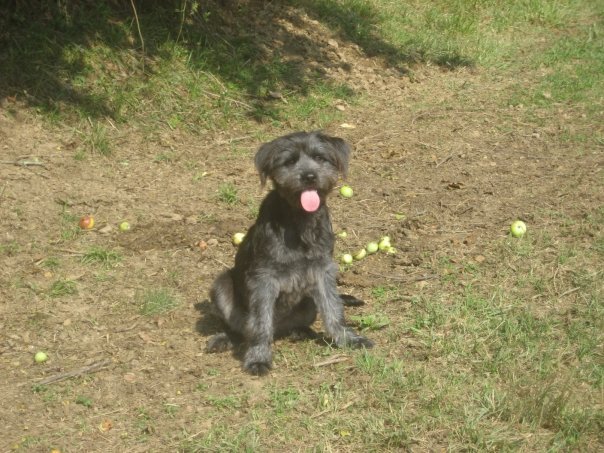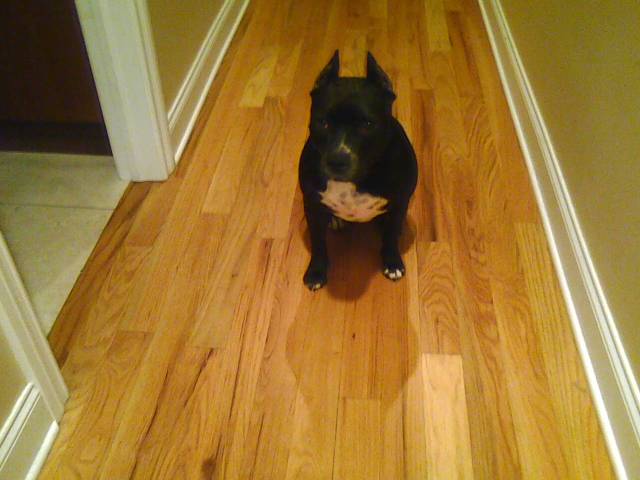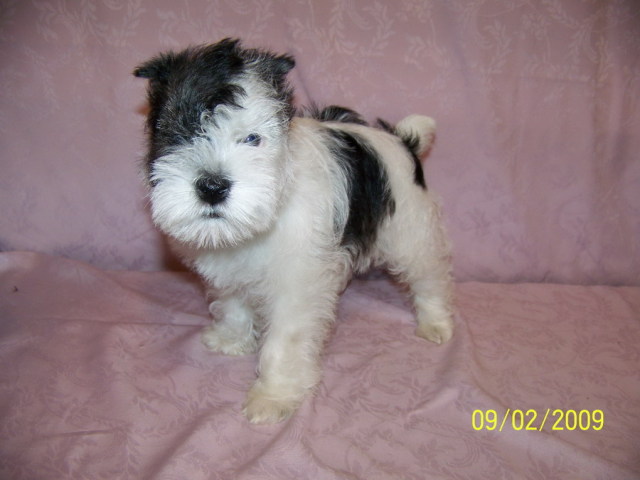QuestionHi, my boyfriend and i just moved in together and he has a three year old pitbull (Duke). I have a 6 year cat (sampson). His pitbull does not like cats at all and is not used to being around them. There are stray cats outside (because we live in the sticks) and when my boyfriend took Duke outside the other night to put him on his runner he almost dragged him across the yard after the stray cats. My boyfriend has made it clear that there is no way for them both to live in the house together. Duke has been at our house for 3 days now and i brought my cat there last night. We don't know what to do because if i put my cat in a room by himself then he will meow all night and in turn will make Duke bark all night, so last night we slept in separate rooms with our animals. Do you have any suggestions on how we can make this work?? I don't think it is right to leave Duke outside at all times because he is not used to it. But i also don't want him to hurt my cat.
AnswerNobody knows everything. I am afraid this is a tough problem and I have little experience with cats or getting dogs to tolerate them. Strong leadership never hurts. The key to most behavior problems is approaching things using the dog's natural instincts. Dogs see all the people and dogs in the household as a pack with each having their own rank in the pack and a top dog. Life is much easier if the 2 legged pack members outrank the 4 legged ones. You can learn to play the role of top dog by reading some books or going to a good obedience class. A good obedience class or book is about you being top dog, not about rewarding standard commands with a treat. Start at http://www.dogsbestfriend.com/ For more on being top dog, see http://www.dogbreedinfo.com./topdogrules.htm
You could crate the dog at night and when nobody can watch it. It is only natural that a puppy resists its crate at first. What the puppy wants more than anything else is to be others, you, anyone else in the household, and any other pets. In our modern society, even if we are home, other things distract us from the attention an uncreated puppy must have. The only real solution is to crate the dog when you aren't around. The dog may be happier in its den than loose in the house. It relaxes, it feels safe in its den. It rests, the body slows down reducing the need for water and relieving its self. Dogs that have been crated all along do very well. Many of them will rest in their crates even when the door is open. I think the plastic ones give the dog more of a safe, enclosed den feeling. Metal ones can be put in a corner or covered with something the dog can't pull in and chew. Select a crate just big enough for the full grown dog to stretch out in.
Leave it some toys. Perhaps a Kong filled with peanut butter. Don't leave anything in the crate the dog might chew up. It will do fine without even any bedding. You will come home to a safe dog and a house you can enjoy.
A dog that has not been crated since it was little, may take some work. Start out just putting its toys and treats in the crate. Praise it for going in. Feed it in the crate. This is also an easy way to maintain order at feeding time for more than one dog.
The "shut the puppy in a safe room" is a fallacy. Very few houses even have a safe room. How many of us have a room with a hard surfaced floor and nothing else? Most rooms have electrical cords to chew if nothing else. In addition to destroying anything a bored puppy finds to chew, it may choke or have intestinal blockage from the pieces. I had a friend that left her dog in a "safe" room. It ate a hole in the floor covering. The safe rooms fail to give the dog the comfort of the enclosed space their instinct requires. Nor do they restrict activity extending the time the dog can go without relieving itself.
A 6 year old dog that has never been crated may not accept it. In some cases, an older dog will adjust to being on a tie down better. It is just a short length of chain secured at one end, and a snap at the other. My Xanthe will be on one tomorrow afternoon. She is a 10 month old Lab that loves to play. We will be keeping our friend's 7 year old, and he quickly tires of her. This way, he can play with her if he wants, or retreat out of reach.
I don't know that there is a good answer to your problem. while I may be as good or better at starting a puppy out right, others may do better correcting problems with an older dog. You might see what the people in the Dog training category her have to say. You might also look at a private trainer or behaviorist.

 Help with my best friend :)
Question
cash
Hello!
&
Help with my best friend :)
Question
cash
Hello!
&
 My miniature pinscher :)
Question
Chanel
I had a miniature pinscher of 8
My miniature pinscher :)
Question
Chanel
I had a miniature pinscher of 8
 AmStaff Terrier
QuestionMy dog
QUESTION: I have a 2 1/2 year old
AmStaff Terrier
QuestionMy dog
QUESTION: I have a 2 1/2 year old
 Found Dog
Question
this is what it looks
Hello my is sara and my
Found Dog
Question
this is what it looks
Hello my is sara and my
 Eye problems w/ schnauzers
Question
Mini parti schnauzer
We currently have a 14 yr
Eye problems w/ schnauzers
Question
Mini parti schnauzer
We currently have a 14 yr